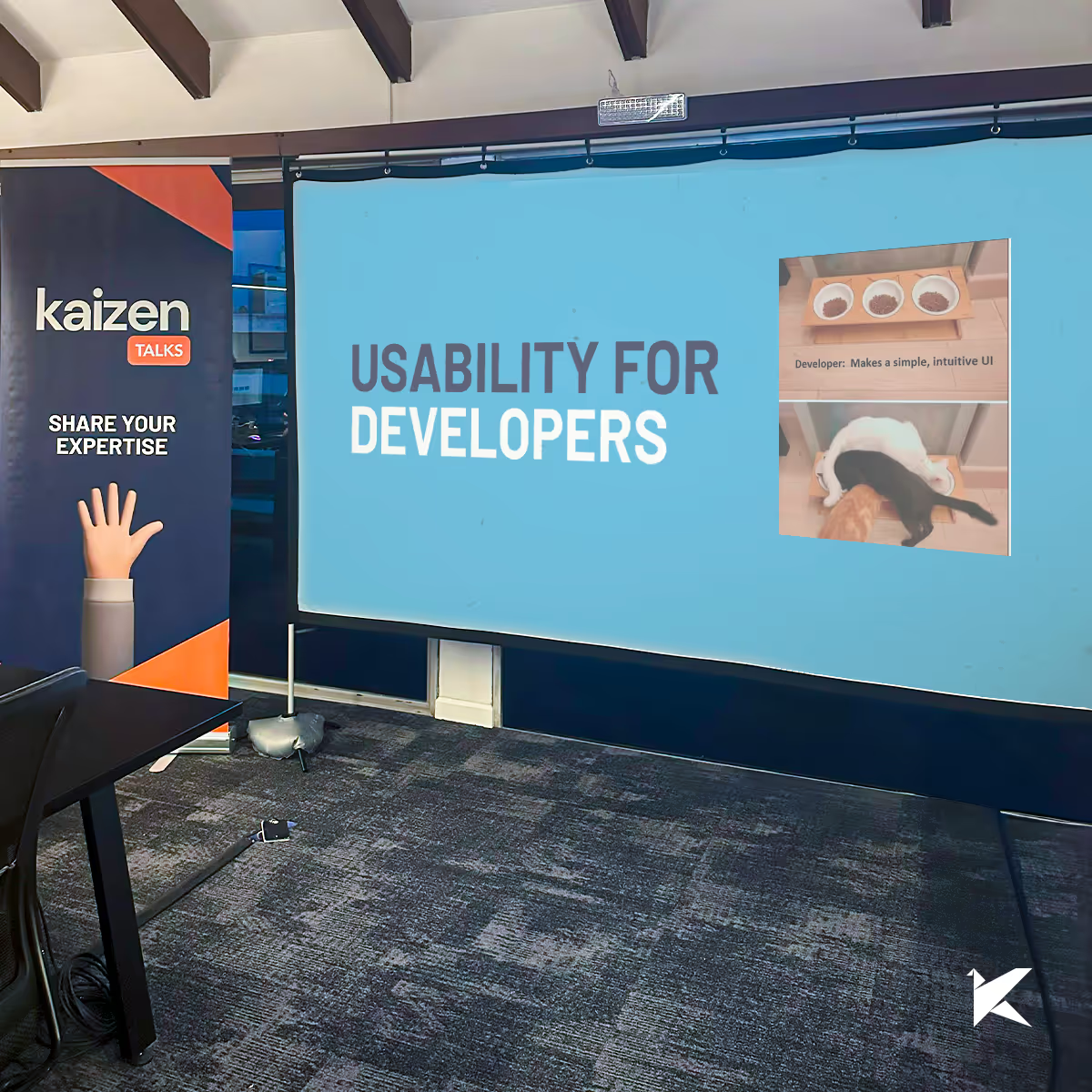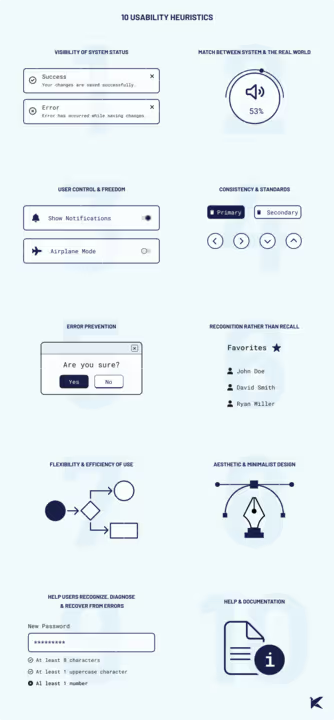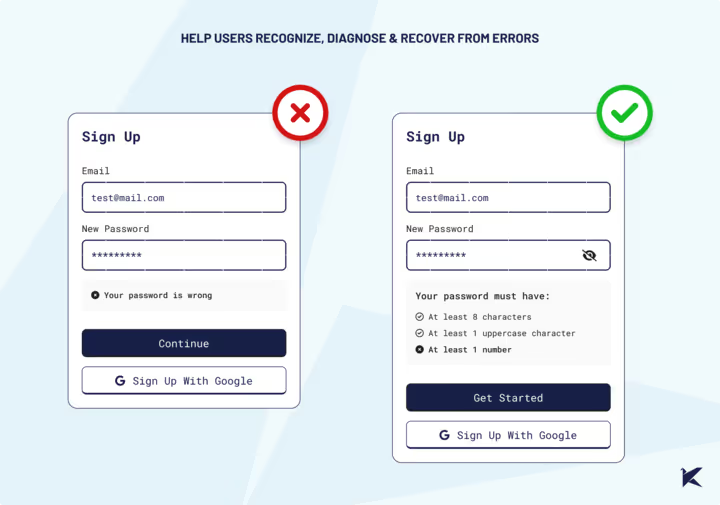
Usability isn't just a designer's jergon. For developers, understanding usability can make a big difference. It makes it easier to work independently and effectively collaborate with designers and users. This understanding cuts down on the back-and-forth between design, development, and product owners, saving you time.
In this blog post, we'll show you how to understand, evaluate, and prioritize usability using practical tools. These tips will empower you to work more independently and improve your development process.
What is Usability?
First, we should start by defining usability. Usability is all about making it easy for users to interact with a product and achieve their goals efficiently and effectively. It’s not just a vague concept—there are universal rules and guidelines we can follow, and even adapt to our specific product.
When we talk about usability, we focus on three main aspects:
- Efficiency: How fast can users complete their tasks?
- Effectiveness: How accurately can users achieve their goals?
- Satisfaction: How enjoyable is the overall experience?
These aspects are measurable. For example, reducing the time it takes a user to complete a task by 20%, not only improves usability but also translates into quantifiable costs savings and user satisfaction.
Why Usability is Important in Software Projects?
- Boosts user satisfaction: Easy-to-use products keep users happy.
- Reduces errors: Clear instructions and feedback help users make fewer mistakes and recover quickly when they do.
- Makes learning easy: Consistent design elements make it easy for users to understand and remember how to use your product.
- Cuts support costs: User-friendly products lead to fewer support calls, saving money.
- Boosts efficiency: Familiar interfaces help users navigate and complete tasks more quickly.
- Increases user retention: Satisfied users are more likely to stick around.
- Improves accessibility: Usable products work well for everyone, including those with disabilities.
- Drives conversions: A smooth and enjoyable process turns visitors into customers.
Why Developers Should Care About Usability?
Usability it's a fundamental part of the development process that can streamline workflows and reduce the need for revisions. Here's why it's essential for developers:
Improve Cross-Functional Collaboration
Understanding usability allows developers to connect more effectively with other departments such as user experience (UX) designers, product owners, and users. This common ground promotes better communication and ensures everyone is focused on user-centric goals.
Reduce Hand-Offs
When developers have a good grasp of usability, the transition between design and development becomes smoother. Early involvement in usability discussions can cut down on extensive revisions and ensure features are well-planned from the start.
Minimize Rework
Planning features with usability in mind prevents costly back-and-forth adjustments after launch. Addressing usability issues early not only guarantees functionality but also improves the user experience of the final product.
Increase Development Efficiency
Consider usability as a part of the big picture, not just an add-on. This perspective allows developers to anticipate user needs, streamline their development processes, and deliver more efficient solutions.
Prioritization
Usability evaluations equip developers with tangible metrics to identify and prioritize issues effectively. This clarity prevents unnecessary changes based on subjective opinions and focuses efforts on addressing critical user experience challenges.
How to Evaluate Usability?
There is no single way to evaluate usability, and there’s no definitive rulebook that applies to every single situation. That said, in this article we’ll be focusing on different heuristic lists. These lists provide general rules or guidelines for identifying usability problems in user interface design.
Some common examples include Nielsen's Usability Heuristics, Gerhardt-Powals' Cognitive Engineering Principles, Shneiderman's Eight Golden Rules of Interface Design, Bastien and Scapin's Ergonomic Criteria, Don Norman's Design Principles, and the ISO 9241-110 Dialogue Principles.
The great thing about these lists is that they’re not set in stone. You can adapt them to fit your unique business needs. For example, if you’re in the business of selling light switches, the height and position of the switch would be pretty crucial parameters in terms of usability.
So, grab a list, understand it, and start evaluating whether you’re meeting usability standards. Remember, customizing the list to your own specific situation and business context is a must.

Some examples of Usability Heuristics
- Help Users Recognize, Diagnose & Recover From Errors

- Match Between System and the Real World

Prioritizing Usability Issues
When prioritizing usability issues, it's important to have a systematic approach to ensure that we address the most critical problems first. One effective method is to use formulas that assign a specific weight to each issue. These formulas can consider several criteria to determine the priority level.
For example, we can rate the business impact on a scale from 1 to 5.
We can also categorize the criticality of the usability problem, ranging from blocker to suggestion, including moderate and serious levels.
Additionally, the duration of the issue's existence can be part of this formula, gaining more weight over time.
It's important not to rush to address the first piece of feedback, especially when it comes from someone influential like a CEO or Product Owner. We often tend to over-prioritize such feedback, but even well-intentioned suggestions can sometimes cause more harm than good.
So, what should we do? We need to learn how to assign a weight to each usability issue to focus on those that will have the most significant impact. By doing so, we ensure that we address the most critical usability issues first, allocate resources effectively, minimize costs, and achieve significant improvements in usability, leading to a higher return on investment.
Generating Solutions
When generating solutions, it's ideal to have multiple options to bring to the table for discussion. Having various solutions allows us to evaluate different complexities with different levels of effort.
Sometimes, putting a lot of effort into a small problem doesn't make sense, just as solving a big problem with minimal effort might not be effective. By considering multiple solutions, we can weigh the pros and cons of each and choose the most appropriate approach for the situation.
Conclusion
Understanding usability is crucial for developers. It enhances collaboration, reduces rework, and ensures features are user-friendly from the start. By focusing on efficiency, effectiveness, and satisfaction, you can create products that not only function well but also delight users.
Next time you’re planning a feature, think about usability and see the difference it makes.



.png)

.png)









